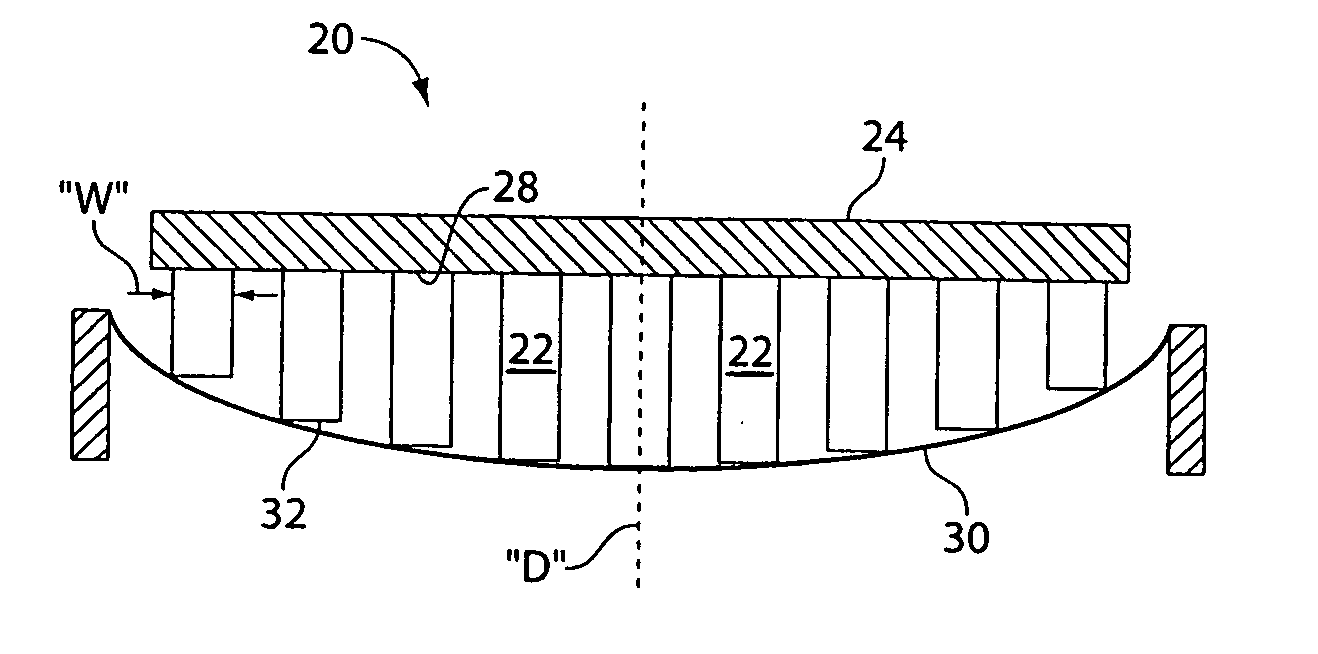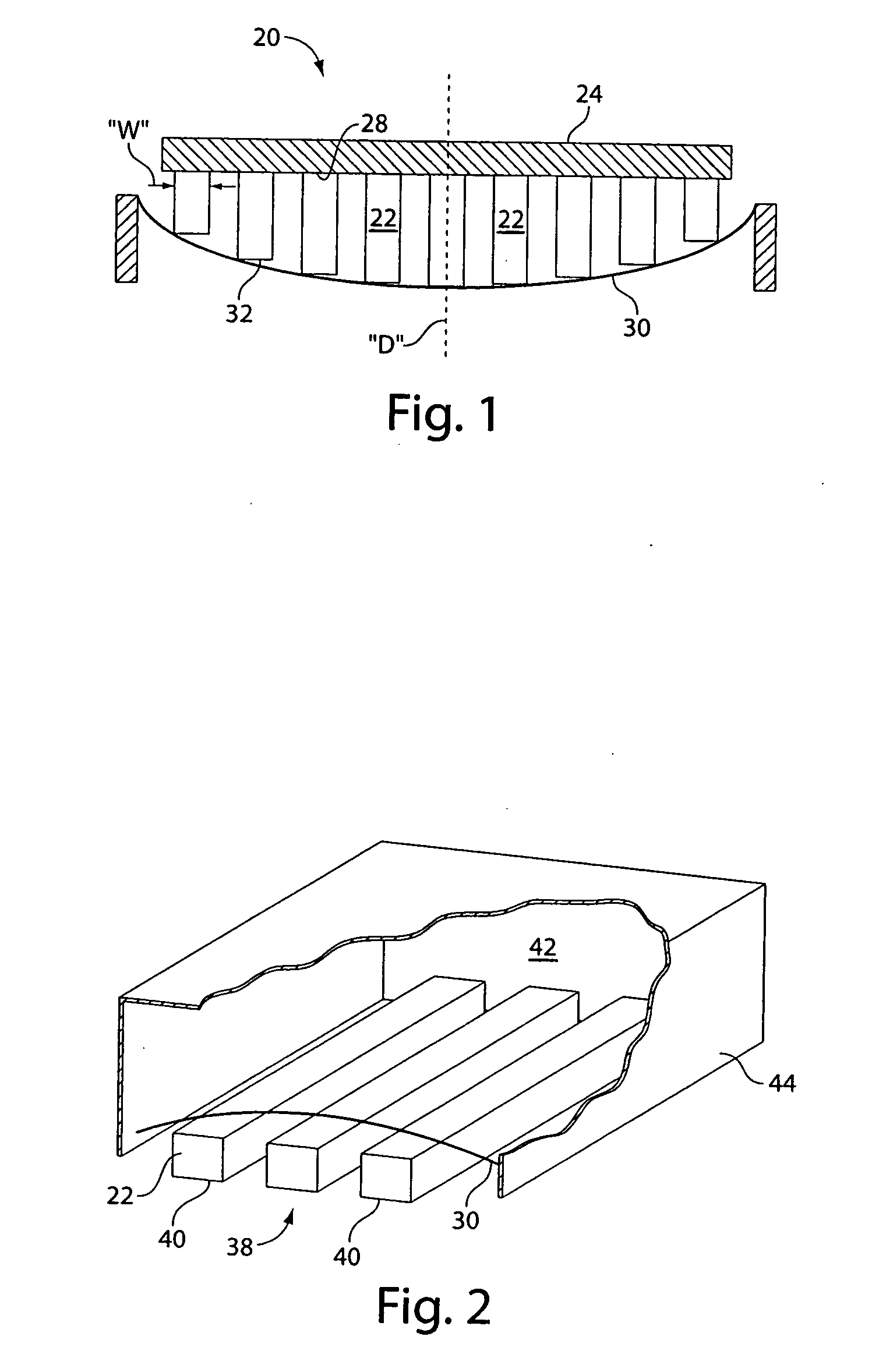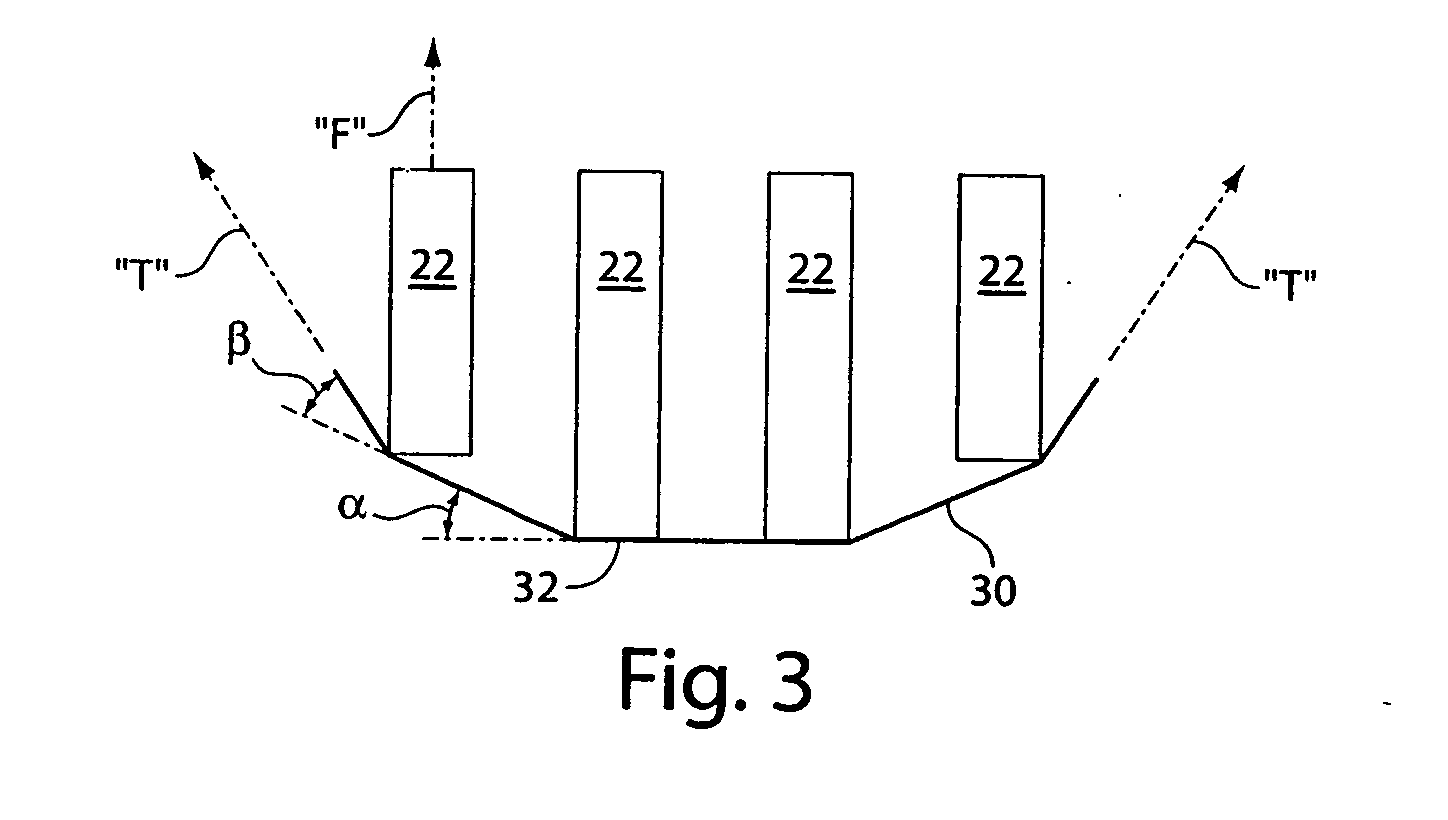Electrical connector
a technology of electrical connectors and connectors, applied in the direction of coupling contact members, coupling device connections, conductive pattern formation, etc., can solve the problems of reducing the reliability of connections, wiping action between conductors and mating surfaces, and high normal contact force drawbacks
- Summary
- Abstract
- Description
- Claims
- Application Information
AI Technical Summary
Problems solved by technology
Method used
Image
Examples
Embodiment Construction
[0024] The electrical connectors of the present invention are adapted to provide an electrical connection with a mating surface, regardless of the shape of the mating surface. For example, connectors can be adapted to engage flat surfaces, concave surfaces, or other surfaces that lack portions extending from the mating surface toward the conductors. Connectors of many embodiments include a loading fiber and one or more electrical conductors. The connector is arranged, such that upon engagement with the mating surface, the conductor is displaced toward the loading fiber, thereby tensioning the loading fiber. Tensioning of the loading fiber, in turn, resists the movement of the conductors and in doing so, provides contact forces between the conductors and the mating surface.
[0025] Embodiments of the electrical connector allow materials with optimal electrical characteristics to be used as conductors, and materials with optimal mechanical properties to provide contact forces between t...
PUM
| Property | Measurement | Unit |
|---|---|---|
| electrical | aaaaa | aaaaa |
| contact force | aaaaa | aaaaa |
| electrical connection | aaaaa | aaaaa |
Abstract
Description
Claims
Application Information
 Login to View More
Login to View More - R&D
- Intellectual Property
- Life Sciences
- Materials
- Tech Scout
- Unparalleled Data Quality
- Higher Quality Content
- 60% Fewer Hallucinations
Browse by: Latest US Patents, China's latest patents, Technical Efficacy Thesaurus, Application Domain, Technology Topic, Popular Technical Reports.
© 2025 PatSnap. All rights reserved.Legal|Privacy policy|Modern Slavery Act Transparency Statement|Sitemap|About US| Contact US: help@patsnap.com



